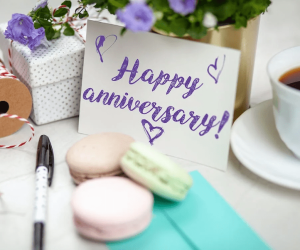
Spending time outdoors, getting some exercise, and learning about the world around you are all enhanced by a bike ride with a young child. Using a child bike seat is a great way to give your kid a taste of the freedom and fun of cycling alongside you. However, when riding with a kid, safety must always come first. Read on for the top ten safety guidelines for bike seats. These guidelines will help you and your child have a pleasant and safe bike ride, from selecting the appropriate seat to installing it correctly.
Selecting the Appropriate Bicycle Seat
When it comes to your child’s safety on a bike, the first step is to select the appropriate bike seat. There are two primary configurations for child bike seats: front-mounted and rear-mounted. It will come down to your personal preference and your child’s specific needs when deciding between the various types.
A front-mounted seat is one that is attached to the front of the bike’s handlebars. Putting your child in a front-facing seat like this one https://threo.co.uk/product/front-mounted-child-bike-seat has many advantages, one of the most important being the increased safety and security it offers. Unlike with rear-facing seats, you can keep a watchful eye on your child. Furthermore, front-mounted seats are more robust due to a more robust design and a secure attachment system that offers greater stability. Seats closer to the front of the vehicle are typically easier to mount and dismount, which is especially helpful in a pinch.
Seats mounted in the rear of a cycle are typically located behind the rider’s saddle. Some cyclists prefer rear-mounted seats because they provide a more natural position from which to pedal. There are, however, drawbacks to having seats in the back. One drawback is that they can be harder to mount and dismount, especially if your child is on the heavier side. It can also be trickier to keep an eye on your kid in a rear-facing seat because they’ll be behind you.
Check the Weight Limit
Every bicycle has a maximum load capacity that should not be exceeded. Get a seat that can hold your child without any problems. Check it before making a purchase.
Put on a Helmet
The most crucial piece of protective gear you can give a child is a helmet. When shopping for a helmet, make sure it fits well and is made for cycling. Even for short distances, your child should always wear a helmet while riding in a bike seat. Here are reasons why your kid should always wear a helmet when riding a bike:
- Helmets are constructed to take the brunt of a collision and protect the wearer’s head. Children, who are still growing and therefore more vulnerable to head injuries, need this especially;
- Head injuries are extremely dangerous and, in the worst cases, can be fatal. In the event of an accident, the likelihood of sustaining a severe brain injury is greatly diminished if the wearer is donning a helmet;
- Children learn from watching and imitating their parents and other adults. If you lead by example and always wear a helmet when cycling, you can instill that value in your kid;
- In many places, it is the law that minors who are cycling must wear a helmet. Make sure your kid always wears a helmet when they ride a bike, even if doing so isn’t required where you live.

Put on your Seatbelts Properly
It’s crucial that you secure your kid’s bike seat correctly to prevent any accidents. Make sure your child is safely fastened in and that the straps are snug but not too tight. Before you get on the ride, make sure the buckles are secure.
Secure Your Child’s Feet
Ensure your child’s shoelaces are tied and not dangling, as this could cause them to get caught in the bike’s moving parts.
Provide Fun for Your Kid
Young children need something to keep them entertained while riding in a bike seat. Get your kid occupied on the drive by packing some snacks and entertainment. Making the trip more fun by singing songs or playing games.
Be Conscious of Your Environment
When out and about with a young child, it’s crucial that you keep an eye on your surroundings. Watch out for oncoming vehicles, runners, and other dangers. Always talk to your kid and use hand gestures to communicate while driving. To stay safe while riding in traffic, look for roads with bike lanes or travel during off-peak hours.
Don’t Forget About Your Own Safety
Don’t put your own safety at risk while trying to ensure your child’s security. Put on protective gear like a helmet every time you ride a bike. Signal your turns and stick to the speed limit to keep the roads safe. Keep in mind that the safety of both you and your child is ultimately your responsibility.
Conclusion
The use of a child seat is highly recommended for the sake of your kid’s safety while cycling. The top 10 tips for bike safety include picking the right seat, buckling the child in correctly, and keeping an eye on your surroundings. If you put safety first and adhere to these guidelines, you’ll have many pleasant and risk-free rides together. So get geared up, head outside, and have some fun, but always remember to think about your safety.



